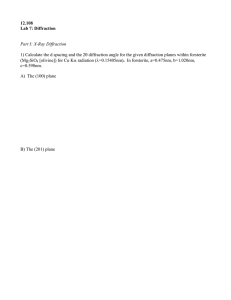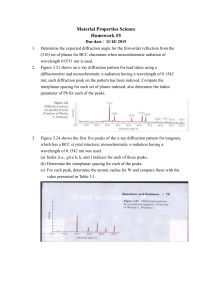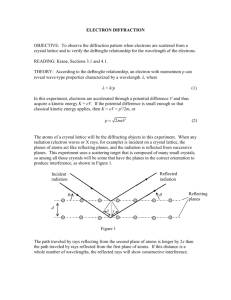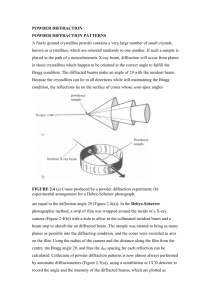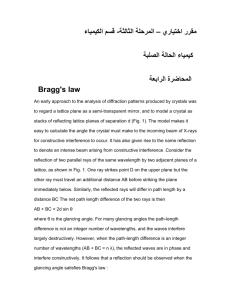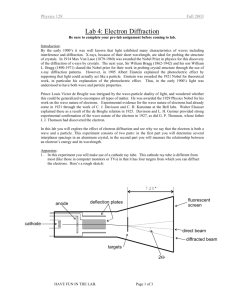pubdoc_4_10356_250
advertisement
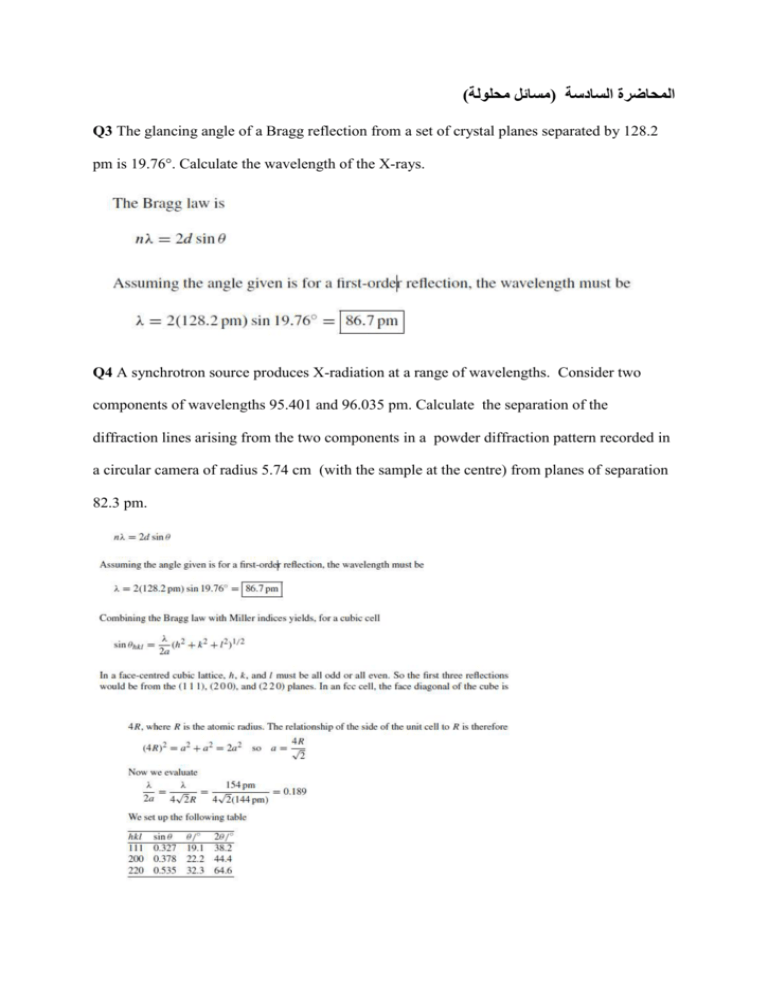
)المحاضرة السادسة (مسائل محلولة Q3 The glancing angle of a Bragg reflection from a set of crystal planes separated by 128.2 pm is 19.76°. Calculate the wavelength of the X-rays. Q4 A synchrotron source produces X-radiation at a range of wavelengths. Consider two components of wavelengths 95.401 and 96.035 pm. Calculate the separation of the diffraction lines arising from the two components in a powder diffraction pattern recorded in a circular camera of radius 5.74 cm (with the sample at the centre) from planes of separation 82.3 pm. Q5 Calculate the volume of the hexagonal unit cell of sodium nitrate, for which the dimensions are a = 1692.9 pm and c= 506.96 pm. Q6 An orthorhombic unit cell of a compound of molar mass 135.01 g mol-I has the dimensions a = 589 pm, b = 822 pm, and c = 798 pm. The density of the solid is estimated as 2.9 g cm- 3 . Determine the number of formula units per unit cell and calculate a more precise value of the density. Q7 An orthorhombic unit cell has dimensions a = 679 pm, b = 879 pm, and c= 860 pm. Calculate the spacing, d, of the (322) planes. Q8 A substance known to have a cubic unit cell gives reflections with radiation of wavelength 137 pm at the glancing angles 10.7°, 13.6°, 17.7°, and 21.9°. The reflection at 17.7° is known to be due to the (111) planes. Index the other reflections. Q9 Calcium carbonate crystals in the form of aragonite have orthorhombic unit cells of dimensions a = 574.1 pm, b = 796.8 pm, and c= 495.9 pm. Calculate the glancing angles for the (100), (010), and (111) reflections using radiation of wavelength 83.42 pm (from aluminium). Q I0 A powder diffraction photograph from tungsten shows lines that index as (1l0), (200), (211), (220), (3l0), (222), (321), (400),... Identify the (Bravais) lattice type of the unit cell. All of the reflections present have h + k + l even, and all of the even h + k + l are present. The unit cell, then, is body-centred cubic .





